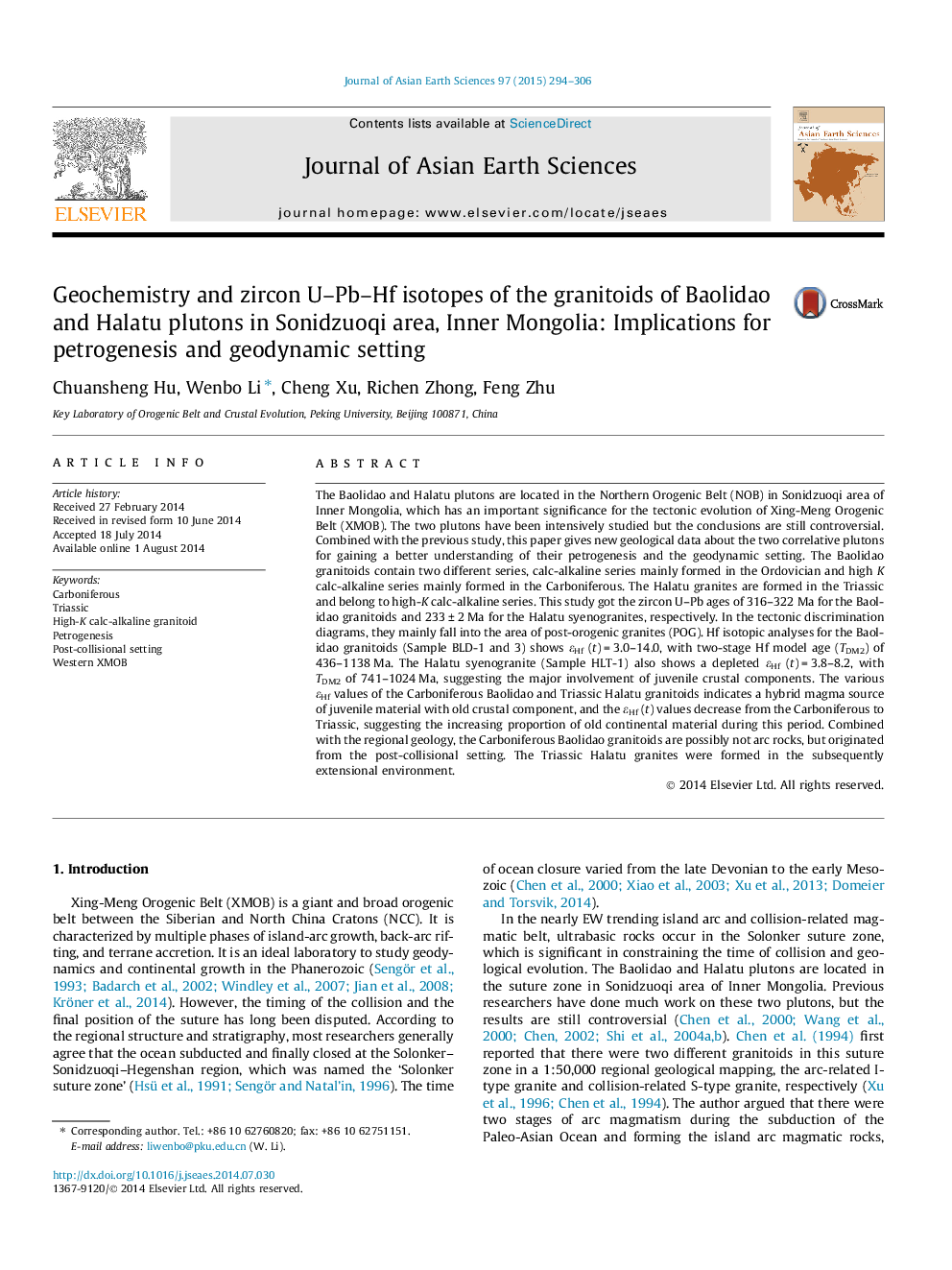| Article ID | Journal | Published Year | Pages | File Type |
|---|---|---|---|---|
| 4730439 | Journal of Asian Earth Sciences | 2015 | 13 Pages |
•The Baolidao granitoids contain calc-alkaline and high K calc-alkaline series.•The Halatu granitoids belong to high-K calc-alkaline series.•The Carboniferous Baolidao granitoids are possibly not arc rocks.•The Triassic Halatu granites were formed in an extensional environment.
The Baolidao and Halatu plutons are located in the Northern Orogenic Belt (NOB) in Sonidzuoqi area of Inner Mongolia, which has an important significance for the tectonic evolution of Xing-Meng Orogenic Belt (XMOB). The two plutons have been intensively studied but the conclusions are still controversial. Combined with the previous study, this paper gives new geological data about the two correlative plutons for gaining a better understanding of their petrogenesis and the geodynamic setting. The Baolidao granitoids contain two different series, calc-alkaline series mainly formed in the Ordovician and high K calc-alkaline series mainly formed in the Carboniferous. The Halatu granites are formed in the Triassic and belong to high-K calc-alkaline series. This study got the zircon U–Pb ages of 316–322 Ma for the Baolidao granitoids and 233 ± 2 Ma for the Halatu syenogranites, respectively. In the tectonic discrimination diagrams, they mainly fall into the area of post-orogenic granites (POG). Hf isotopic analyses for the Baolidao granitoids (Sample BLD-1 and 3) shows εHf (t) = 3.0–14.0, with two-stage Hf model age (TDM2) of 436–1138 Ma. The Halatu syenogranite (Sample HLT-1) also shows a depleted εHf (t) = 3.8–8.2, with TDM2 of 741–1024 Ma, suggesting the major involvement of juvenile crustal components. The various εHf values of the Carboniferous Baolidao and Triassic Halatu granitoids indicates a hybrid magma source of juvenile material with old crustal component, and the εHf (t) values decrease from the Carboniferous to Triassic, suggesting the increasing proportion of old continental material during this period. Combined with the regional geology, the Carboniferous Baolidao granitoids are possibly not arc rocks, but originated from the post-collisional setting. The Triassic Halatu granites were formed in the subsequently extensional environment.
